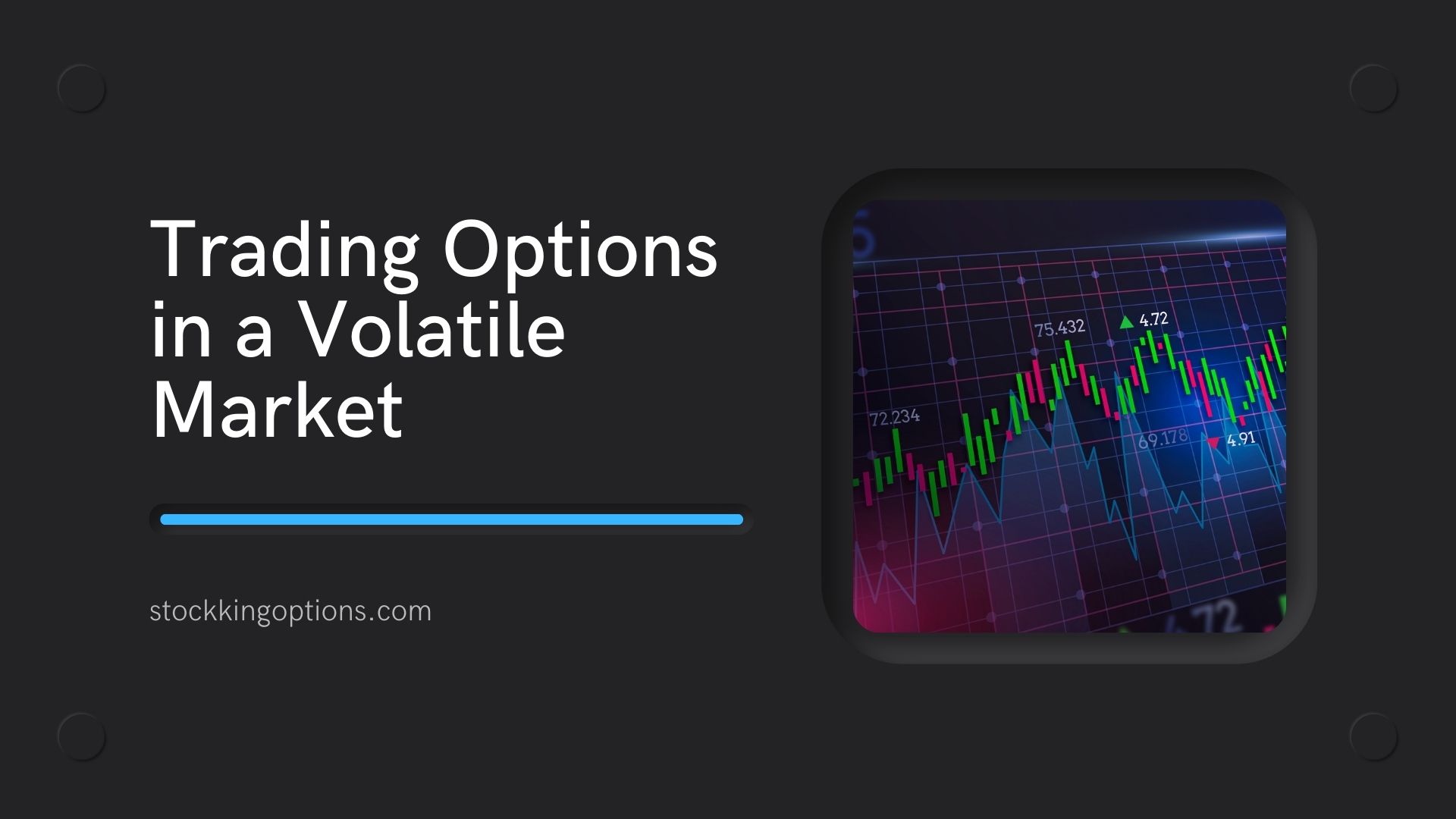
Welcome to the thrilling world of trading options in a volatile market! Strap yourselves in, ladies and gentlemen, as we embark on a rollercoaster ride that will test our nerves, challenge our instincts, and potentially unlock immense rewards. In today’s blog post, we’ll dive headfirst into this fast-paced realm where uncertainty meets opportunity. So whether you’re an experienced trader seeking new strategies or a curious novice eager to learn the ropes, get ready for an adrenaline-pumping adventure filled with tips, tricks, and insider secrets to conquer the wild fluctuations of a volatile market. Let’s seize every twist and turn together as we explore the exhilarating world of day trading stock options amidst chaos!
Strategies for Navigating Volatility in Options Trading
Options trading can be a lucrative venture, but it also involves significant risk. In a volatile market, where price changes are rapid and unpredictable, navigating options trading can become even more challenging. However, with the right strategies in place, you can effectively manage volatility and emerge successful in your options trades.
Here are some strategies for navigating volatility in options trading:
1. Understand Volatility: The first step to managing volatility is to understand what it means for options trading. Volatility refers to the rate at which prices fluctuate in the market. High volatility means that prices are changing rapidly and unpredictably, making it riskier to trade. On the other hand, low volatility indicates relatively stable prices and lower risk levels.
2. Use Limit Orders: One way to navigate through volatility is by using limit orders instead of market orders. A limit order allows you to set a specific price at which you want to buy or sell an option contract. This gives you better control over your trades in a volatile market as it ensures that you don’t end up paying more than what you intended or selling at a lower price than desired.
3. Diversify Your Portfolio: Another effective strategy for handling volatility is by diversifying your portfolio. Instead of putting all your capital into one type of option or one underlying asset, consider spreading your investment across different types of options and assets. This will help minimize potential losses if one particular trade goes wrong due to high market volatility.
4 .Use Stop Loss Orders: Stop loss orders allow you to set a predetermined level at which your position will automatically close if the market moves against you beyond a certain point. It helps protect your downside risk while allowing room for gains if the trade goes well.
5 .Hedging Strategies: Hedging is another essential technique used by option traders during periods of high volatility when there are greater risks involved with each trade made. By hedging their positions with other assets or options, traders can mitigate potential losses and minimize the impact of volatility on their portfolio.
6. Stay Informed: In a volatile market, it is crucial to stay updated with market news and events that may affect your options trades. Keep an eye on economic announcements, company earnings reports, and geopolitical developments as they can significantly impact the prices of underlying assets.
Navigating volatility in options trading requires a thorough understanding of its implications and implementing appropriate strategies. By diversifying your portfolio, using limit orders and stop loss orders, hedging positions, and staying informed, you can manage risk effectively in volatile markets and increase your chances for success in options trading. Remember to always assess your risk tolerance before making any trade decisions to avoid significant losses.
Adapting to Rapid Market Changes in Day Trading
Day trading is a high-risk, high-reward form of trading where investors aim to make quick profits by buying and selling stocks, options, or other financial instruments within the same day. One of the biggest challenges faced by day traders is adapting to rapid market changes. And in a volatile market, this challenge becomes even more daunting.
A volatile market is characterized by large and frequent price swings, uncertainty, and sharp fluctuations in stock prices. These unpredictable shifts can be caused by various factors such as economic news, political events, company announcements, or even natural disasters. As a day trader, it is important to understand that volatility is an inevitable part of the market and learning how to adapt to these changes can determine your success.
The first step in adapting to rapid market changes in day trading is to have a solid understanding of the current market conditions. This means keeping up-to-date with relevant news and events that may impact the stock prices of your chosen securities. By having a clear picture of what’s happening in the market, you will be better equipped to make informed decisions based on real-time data.
Secondly, it’s crucial for day traders to have a well-defined trading strategy that includes risk management techniques. Volatility often leads to increased risks, so having a plan in place can help mitigate potential losses. This could involve setting stop-loss orders at predetermined levels or limiting trade sizes during highly volatile periods.
Another helpful tip for adapting to rapid market changes is diversifying your portfolio. By spreading out your investments across different sectors or asset classes, you reduce your overall risk exposure should one particular sector experience significant volatility. Additionally, diversification allows you to take advantage of potential opportunities in alternative areas when one sector experiences turbulent times.
Furthermore, staying disciplined and being able to control emotions is essential when dealing with rapid market changes. It can be tempting for traders to panic-sell during volatile periods or chase after fast-moving stocks without proper research. However, this reactive behavior can lead to costly mistakes. It’s important to stick to your trading plan and not let emotions dictate your actions.
It’s crucial for day traders to continually educate themselves and stay on top of market trends. This will help them adapt quickly and make informed decisions in response to rapid market changes. Reading books, attending seminars or webinars, and following reputable financial blogs are some ways to stay updated and improve one’s trading skills.
Adapting to rapid market changes is a skill that every day trader must master. By understanding the current market conditions, having a solid strategy in place, diversifying one’s portfolio, staying disciplined, and continually educating oneself – traders can effectively navigate through volatile periods and potentially capitalize on opportunities that arise.
Using Options to Hedge Against Market Volatility
Options trading can be a powerful tool for investors looking to hedge against market volatility. In this section, we will dive into the different types of options and strategies that can be used to protect your portfolio during times of uncertainty.
Firstly, it is important to understand the two main types of options: calls and puts. A call option gives the holder the right, but not the obligation, to buy an underlying asset at a specified price (strike price) within a certain timeframe. On the other hand, a put option gives the holder the right, but not the obligation, to sell an underlying asset at a specified price within a certain timeframe.
In times of market volatility, investors may choose to purchase put options as insurance against potential losses in their portfolio. For example, let’s say an investor holds 100 shares of Company ABC which is currently trading at $50 per share. The investor could purchase one put contract with a strike price of $45 and an expiration date in three months. If there was a sudden drop in Company ABC’s stock price below $45 per share before the expiration date, this put option would serve as insurance and allow the investor to sell their shares at $45 rather than potentially selling them for less on the open market.
Another strategy that investors can use when anticipating or experiencing market volatility is known as “straddle”. This involves purchasing both call and put options on an underlying asset with identical strike prices and expiration dates. The goal here is to profit from any significant move in either direction of the underlying asset’s price.
Investors who hold long positions in stocks may also consider using covered call options during volatile market conditions. By selling call options against their stocks, they are effectively generating income while also having some downside protection if their stock prices decline.
Another commonly used hedging strategy involving options is called “collar”. This strategy involves buying protective puts while simultaneously selling out-of-the-money calls. This limits both the potential gains and losses on a stock position.
Options can be used to hedge against market volatility in various ways depending on the investor’s risk tolerance and investment objectives. It is essential to thoroughly research and understand these strategies before implementing them in your portfolio, as they do come with their own risks and costs. As always, it is recommended to consult with a financial advisor before making any significant changes to your investment strategy.




